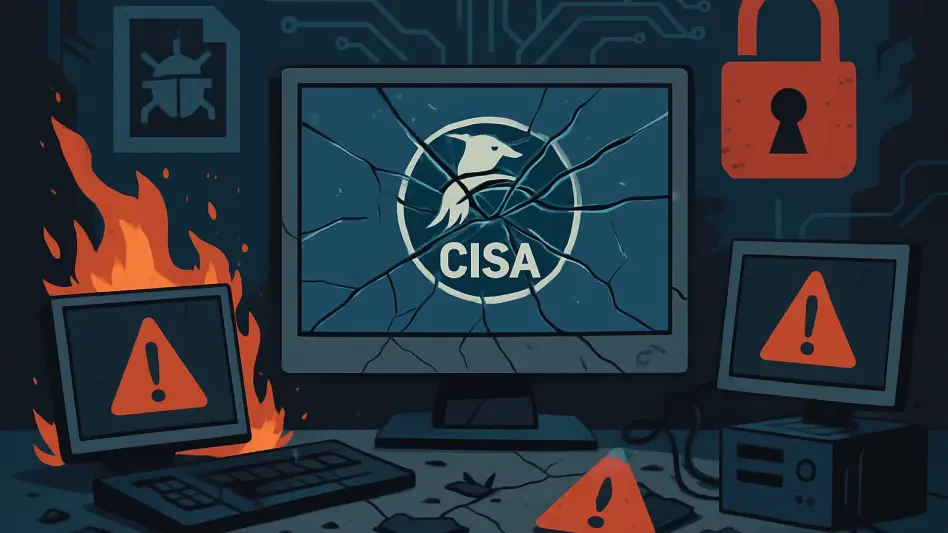What happens when a federal agency tasked with defending the nation against cyber threats stumbles over its own efforts to keep its best talent? A staggering $138 million has been poured into a program meant to retain top cybersecurity experts at the Cybersecurity and Infrastructure Security Agency (CISA), yet a damning report reveals a mess of mismanagement and wasted resources. Picture this: hackers targeting critical infrastructure while the very agency meant to stop them struggles to hold onto its brightest minds. This isn’t just a bureaucratic hiccup—it’s a potential chink in the armor of national security. Dive into the unraveling of a well-intentioned initiative that went terribly awry, exposing vulnerabilities far beyond the digital realm.
Why This Matters: The High Cost of Losing Cyber Talent
In a world where cyberattacks can cripple power grids or disrupt elections with a single click, CISA stands as a critical shield for the United States. Retaining skilled cybersecurity professionals isn’t a luxury—it’s a necessity. The agency’s retention incentive program, designed to offer financial bonuses to keep mission-critical staff from jumping to high-paying private sector jobs, was supposed to be a strategic lifeline. With millions of taxpayer dollars at stake, the failure to execute this program effectively doesn’t just burn money; it risks leaving the nation exposed to escalating digital threats. This story isn’t merely about numbers—it’s about the fragility of the systems protecting every American.
A Program Adrift: How $138 Million Slipped Through the Cracks
The Department of Homeland Security’s Office of Inspector General (OIG) uncovered a litany of failures in CISA’s handling of its retention incentives. Over $138 million has been spent since the program’s recent cycles began, with annual bonuses ranging from $21,000 to $25,000 per recipient. Yet, the OIG found that CISA lacked clear processes to determine who truly qualified for these payments. Eligibility criteria were muddled, and record-keeping by the agency’s human capital office was shoddy at best. Without proper oversight, funds meant for indispensable experts often went to staff who didn’t meet the stringent federal guidelines.
Beyond administrative chaos, the audit revealed a shocking misuse of resources. CISA improperly distributed $1.41 million in back pay to 348 recipients without any justification, flouting federal rules that demand incentives target only those with unique, mission-critical skills. This wasn’t just a paperwork error; it diluted the program’s purpose, spreading limited funds too thin and failing to prioritize the talent most vital to national defense. The result? A program that lost sight of its core mission amid a tangle of inefficiencies.
Inside the Fallout: Voices from the Front Lines
The OIG didn’t just crunch numbers—it amplified the concerns of those directly affected. Auditors warned that “misusing funds and failing to target critical talent heightens the nation’s vulnerability to cyber threats.” This isn’t an abstract fear; it’s a stark reality for an agency tasked with safeguarding everything from water systems to financial networks. The report’s findings resonate with the frustration felt inside CISA, where some officials confided that the program’s overly broad scope “demotivated highly skilled employees” who saw their value undermined.
This internal discontent paints a grim picture of morale. Staff who were excluded from incentives felt sidelined, while others reportedly tried to tweak job descriptions to qualify for bonuses. Such actions reflect a deeper cultural issue—a system meant to unify and strengthen a workforce instead bred resentment and inequity. These firsthand accounts highlight not just a financial misstep, but a failure to foster the trust and dedication needed in a field where every expert counts.
The Bigger Picture: National Security on the Line
Zooming out, the implications of CISA’s mismanagement are chilling. Cyber threats are evolving at breakneck speed, with state-sponsored actors and ransomware gangs targeting critical infrastructure daily. When a program designed to retain top defenders falters, it’s not just about wasted dollars—it’s about gaps in the nation’s digital armor. The OIG pointed out that by failing to focus incentives on truly critical roles, CISA risks losing the very experts who stand between the country and catastrophic breaches.
Consider the potential consequences: a major cyberattack on a power grid during a staffing shortage could leave millions without electricity. The audit’s findings suggest that internal disarray at CISA isn’t a distant problem—it’s a ticking clock. With no reliable data to track the program’s impact or payment accuracy, the agency can’t even gauge if its efforts are stemming attrition. This lack of clarity compounds the danger, leaving both policymakers and the public in the dark about the state of cyber readiness.
Charting a Path Forward: Can CISA Turn the Tide?
The OIG laid out eight recommendations to salvage the retention program, and CISA has largely agreed to act on them. A key step involves tightening eligibility to ensure only mission-critical employees with unique skills receive incentives, backed by rigorous documentation. Another priority is establishing a centralized tracking system to monitor payments and outcomes, preventing further waste. Annual reviews of eligibility and justifications for continued bonuses are also on the table to keep the program aligned with current needs.
Financial accountability must be addressed as well. Resolving the $1.41 million in questioned costs—potentially recovering improper payments—is essential to restore public trust. Stronger oversight from the Department of Homeland Security’s human capital office is recommended to enforce compliance and catch issues before they spiral. These measures aren’t mere fixes; they’re a blueprint to rebuild a program into the bulwark it was meant to be, ensuring that taxpayer funds bolster national security rather than vanish into bureaucratic voids.
Reflecting on a Missed Opportunity
Looking back, the unraveling of CISA’s $138 million cybersecurity retention effort stands as a sobering lesson in the importance of precision and accountability. The intent to safeguard the nation by keeping top talent in place was undermined by systemic lapses that left both funds and morale in tatters. Yet, the path ahead offers hope if the agency acts decisively. Implementing stricter criteria, robust tracking, and consistent oversight could transform this initiative into a true asset. As cyber threats continue to loom, the challenge remains clear: refine the system now to ensure that the next line of defense isn’t just funded, but fortified.








